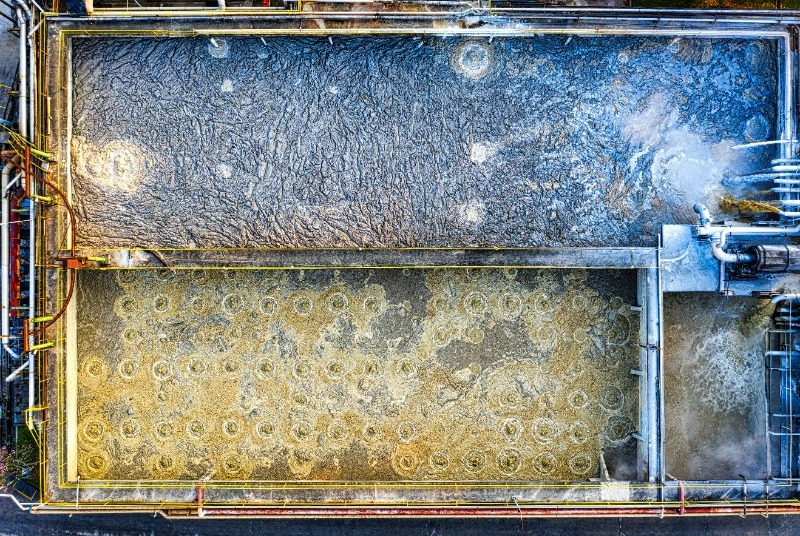Hastings Wastewater Infectious Disease Surveillance Reports
Influenza A & Influenza B, Respiratory Syncytial Virus (RSV), SARS CoV-2 (Novel Corona Virus)
November 21, 2025
What is Wastewater Surveillance?
Wastewater surveillance is a public health tool to monitor the prevalence of infectious disease pathogens in a community. By testing wastewater from wastewater treatment plants (WWTP), we can measure the amount of viruses or other pathogens in community-wide sample while ensuring individual privacy and anonymity.
What the Public Should Know
-
Why wastewater? Virus fragments shed in stool aggregate everyone’s signal—catching silent or un‑tested infections and variant shifts up to a week earlier than clinical data. Source: CDC
-
Current snapshot (Week 46, Nov 15, 2025) – Hastings wastewater facility data: SARS‑CoV‑2 HIGH & Trending UP, & RSV, Flu A, Flu B: NOT DETECTED. Sources: southheartlandhealth.ne.gov - - Read Report: Week 46
-
State context –(Week 46, Nov 15, 2025) , CDC’s NWSS dashboard rates Nebraska’s median viral activity “LOW” for COVID‑19, "VERY LOW" for RSV, and "VERY LOW & Increasing" for Flu A. Sources: COVID-19 trends CDC, RSV trends CDC, Flu trends CDC
-
Variants & emerging bugs (As of Aug 2, 2025 estimates) – XFG, NB1.8.1 & LP8.1 Omicron lineage (43% & 31%) dominates COVID‑19 signals; CDC now tracks avian‑influenza H5 RNA at some sites (none yet detected here). Sources: CDC genomic surveillance, CDC, CDC
-
Evidence base – Recent studies show wastewater trends anticipate hospital peaks by 6–14 days and can flag novel pathogens months early. Sources: ScienceDirect, The Guardian
At the Hastings Wastewater Facility, levels of SARS-CoV-2, Influenza A & B, and Respiratory Syncytial Virus (RSV) are monitored regularly. To see details from the latest report, click the link below:
Week 46 - Ending Nov 15, 2025
What You Can Do with This Information
| When the local trend is… | Recommended Action |
|---|---|
| 1. Low or decreasing |
1. Keep regular hand‑washing and stay current on routine vaccines. |
| 2. Rising or high |
2. Stock home tests and masks; consider postponing large indoor gatherings if you or your household are high‑risk. |
| 3. Very high (red alert) |
3. Wear a high‑quality mask in crowded indoor spaces, ensure good ventilation, and seek antivirals (e.g., Paxlovid) rapidly if you test positive. |
Tip: Wastewater spikes often precede clinical surges—use alerts as your “heads‑up” to refresh prevention supplies a week early.
How to Stay Updated
| Tool | Update Frequency | Link / Action |
|---|---|---|
| 1. SHDHD Wastewater Dashboard | 1. Every Tuesday | 1. Scroll to graphs or sign up for email push alerts - Coming soon! |
| 2. Nebraska DHHS Respiratory Dashboard | 2. Weekly (Fri) | 2. Combines wastewater + hospital metrics for state context. Sources: Nebraska DHHS |
| 3. CDC NWSS Maps (COVID, Flu A, RSV) | 3. Fridays | 3. Check national/state heat‑maps for travel or event planning. Sources: CDC, CDC ,CDC |
| 4. WastewaterSCAN national tracker | 4. Daily | 4. Quick glance at concentration trends across 190+ sites. Sources: data.wastewaterscan.org |
SHDHD Resources
-
Weekly PDF report with 4‑virus trend graphs and interpretation notes (posted under “Public Info → Wastewater Reports”).
-
SMS/Email “Wastewater Watch” – Coming soon!
-
Community presentations – request a 15‑minute talk for schools, councils, or workplaces. Email for more info. devi.dwarabandam@shdhd.ne.gov
References
- CDC NWSS State‑Trend page CDC;
- CDC COVID‑19 current levels map CDC;
- CDC RSV wastewater map CDC;
- CDC Influenza A wastewater map CDC;
- CDC AMD success story on wastewater CDC;
- CDC H5 wastewater table CDC;
- ScienceDirect WBE review 2025 ScienceDirect;
- The Guardian early‑warning feature 2025 The Guardian;
- Nebraska DHHS Respiratory Dashboard overview Nebraska DHHS;
- SHDHD Hastings Week 15 report southheartlandhealth.ne.gov;
- WastewaterSCAN tracker summary data.wastewaterscan.org.
- National Wastewater Surveillance System (NWSS), CDC https://www.cdc.gov/nwss/index.html
- CDC COVID-19 Datatracker, Genomic surveillance https://covid.cdc.gov/covid-data-tracker/#variant-proportions


 Launch the media gallery 1 player
Launch the media gallery 1 player